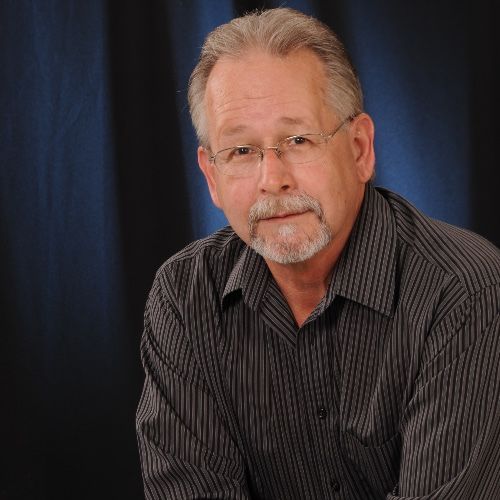Celebrating 100 Episodes: Behind the Scenes with Gray Hair Dave
Celebrating the 100th episode milestone, Dave expresses gratitude to the listeners for their support. Reflecting on the journey of creating a hundred episodes in just six months, he acknowledges the audience's role in motivating him to continue. Despite not being able to celebrate in person, Dave shares insights from his analytics, revealing listeners from various countries. Join Dave in this special episode as he expresses appreciation for his audience and looks forward to many more episodes to come.
https://www.5minuteswithgreyhairdave.com/
Mentioned in this episode:
Merchandise
Go to https://www.5minuteswithgreyhairdave.com find the Merchandise tab and shop to your hearts content
Transcript
[00:05:33] Behind the scenes podcast production.
[:[00:15:06] What is a podcast?
Behind the Scenes Look at the Production Process of the Podcast
The podcast episode, "5 Minutes of Gray Hair Dave," offers a detailed behind-the-scenes look at the production process. The host begins by discussing the tools and software utilized, such as Logic Pro and Hindenburg for recording and editing the audio. The choice of a Samson Q2U dynamic microphone over a condenser microphone to minimize background noise is also explained.
The editing process is emphasized, including the removal of filler words like "ums" and "ahs," as well as adjustments to audio quality through equalization, compression, and limiting. Post-production techniques like adding reverb for enhanced audio quality are also touched upon.
Moreover, the post-production phase is explored, where show notes, titles, and SEO elements are incorporated into the episode. The use of AI tools like Swell AI to generate show notes and optimize content for search engines is highlighted.
The episode underscores the significance of podcast hosting platforms like Captivate.fm for distributing the podcast across various platforms and ensuring content ownership. The host details the process of publishing the episode, from adding metadata to artwork before hitting the publish button.
Overall, the episode provides valuable insights into the meticulous production process of a podcast, showcasing the dedication and effort required to deliver high-quality content to the audience. It sheds light on the technical aspects, creative decisions, and attention to detail involved in creating a successful podcast episode.
Use of Different Digital Audio Workstations for Recording and Editing
In the podcast episode, Gray Hair Dave discusses his use of different digital audio workstations (DAWs) for recording and editing his podcast episodes. Initially, he mentions utilizing Logic Pro for these tasks. However, he later introduces Hindenburg as another DAW he has incorporated into his workflow for the last 15 shows.
Logic Pro:
Recording: Gray Hair Dave explains his process of setting up Logic Pro for recording, highlighting the improved quality achieved by directly connecting to the computer rather than using a separate recorder.
Editing: He stresses the importance of editing out unwanted sounds and distractions, such as ums, ahs, and external noises, while exercising caution to avoid accidental deletions.
Post-Production: Gray Hair Dave describes enhancing audio quality through EQ, compression, limiting, and a touch of reverb using Logic Pro.
Hindenburg:
Reason for Use: Gray Hair Dave shares his experience with Hindenburg, noting his initial use to prepare for an upcoming podcast project. He appreciates the learning opportunity provided by exploring different DAWs.
Editing Benefits: He mentions Hindenburg's features for efficient editing and mastering of audio content, as well as the software's trial period before requiring payment.
By utilizing both Logic Pro and Hindenburg, Gray Hair Dave demonstrates the adaptability and versatility essential in podcast production. This approach allows him to explore various editing techniques, enhance audio quality, and prepare for future projects. It underscores the importance of selecting the right tools to elevate the podcasting experience and deliver top-notch content to listeners.
Encouraging listeners to leave ratings and reviews on podcast platforms is crucial for the success and growth of a podcast. In the episode, Gray Hair Dave expresses gratitude towards his audience and emphasizes the value of their feedback. He highlights how listener input helps him understand the audience better and improve the content.
As a solo podcaster, Gray Hair Dave relies on listener feedback to refine his content and attract new followers. By leaving ratings and reviews, listeners can contribute to the podcast's success and visibility on various platforms. Positive feedback can enhance the podcast's ranking and broaden its reach to a wider audience.
In conclusion, Gray Hair Dave's call for ratings and reviews on podcast platforms underscores the impact of audience engagement on the podcasting community. By actively participating through feedback, listeners play a pivotal role in supporting creators, shaping content, and fostering a sense of community within the podcasting realm.
::00:04:39 - "Congratulations on reaching this milestone of your 100th show. This occasion can be both exciting and meaningful for you and your listeners."
::00:13:30 - "to edit was two times the amount of time I talked or anybody talked."
::
